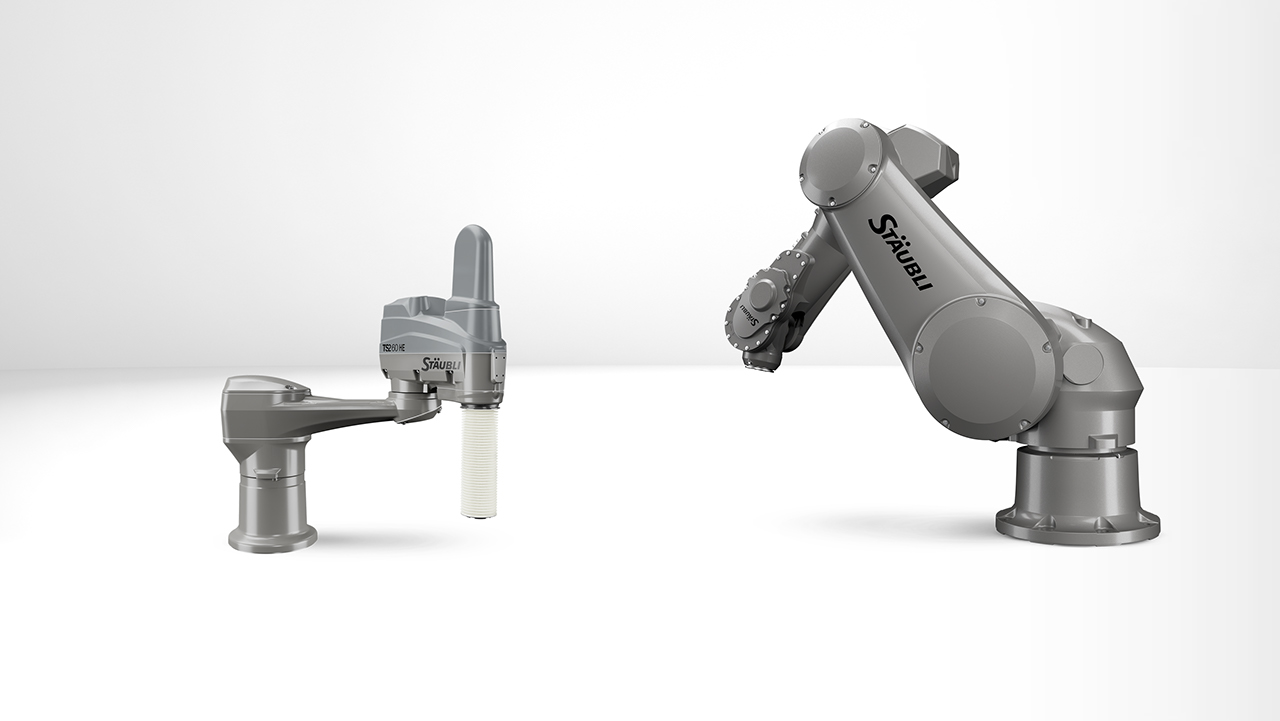SUCCESS STORY
Neat skewering followed by rapid packaging
The packaging of meat kebabs is a strenuous and monotonous task, but this is not the only reason there is hardly any staff for this type of work. With a new system, Busch & Busch is turning the tide and using Stäubli HE robots for packaging.
CUSTOMER BENEFITS
- Cost-effective solution
- High output
- Hygienic operation
- A welcome solution to shortage of skilled labor
TASK
Fully automated packaging of kebabs
What is the most efficient method of producing and packaging 6,000 kebabs per hour? Senior managers at meat processing companies asking themselves this question will find the answer at Busch & Busch, a machine manufacturer that has developed a robot-assisted “skewering machine.” Working hygienically and with great precision, an ultra-dynamic Stäubli robot places the kebabs in their packaging trays.
Based in Delbrück, Germany, Busch & Busch has specialized entirely in hygiene-sensitive applications in the food industry and builds machines that meet the highest requirements for hygiene and productivity.
This also applies to its first generation of skewering machines. Chunks of meat and vegetables are manually inserted into the specially shaped grooves in a plastic conveyor belt. At the skewering station, a servo-controlled pressure frame holds the kebab ingredients in position while pre-separated skewers are pushed through them. In this way, six kebabs are produced simultaneously in a synchronized motion sequence.
While the first generation of machines required the kebabs to be manually packaged, the second generation allows full automation of this production stage. For this application, Stäubli’s six-axis HE (humid environment) robot is the ideal candidate. It is completely watertight and can therefore be used in environments that require rigorous standards of hygiene. The ability to run at full power when lubricated with food-grade H1 oil is another factor that works in favor of this Stäubli model.
SOLUTION
Reliably packaging more than 6,000 kebabs per hour
In the skewering machine from Busch & Busch, a Stäubli TX2-60 HE food grade robot picks up six kebabs in a single sweep and places them three-on-three in a packaging tray that arrives on a conveyor belt. All of this is performed at extremely high speed. In test runs, the first system installed already handled 6,000 kebabs per hour, which amounts to more than 100 per minute. In theory, even higher cycle rates would be possible, because the limiting factor at the moment is the upstream process – laying out the kebab ingredients in the conveyor grooves.
The machine features many innovative solutions at a detailed level, for example in the mechanical grippers that were designed specifically for this task. To save on weight, anodized aluminum was chosen as the material. All other components of the system are made of stainless steel.
The design of the automation solution was kept deliberately simple in order to reduce the potential for faults and breakdowns. It manages without image processing, as the gripping positions are precisely defined and reliably adhered to during the process.
CUSTOMER USAGE
Noteworthy advantages in practice
The first two skewering machines with automated packaging have now entered service in two-shift operation and, to the delight of the users, have been continuously trouble-free. The automation of packaging eliminates as many as three manual workstations, freeing up urgently needed personnel for far more interesting work.
And of course, it’s not just meat that can be skewered and packaged: Fish and vegetables as well as marinated products are processed equally effectively, especially since each machine is built to customer specifications.
